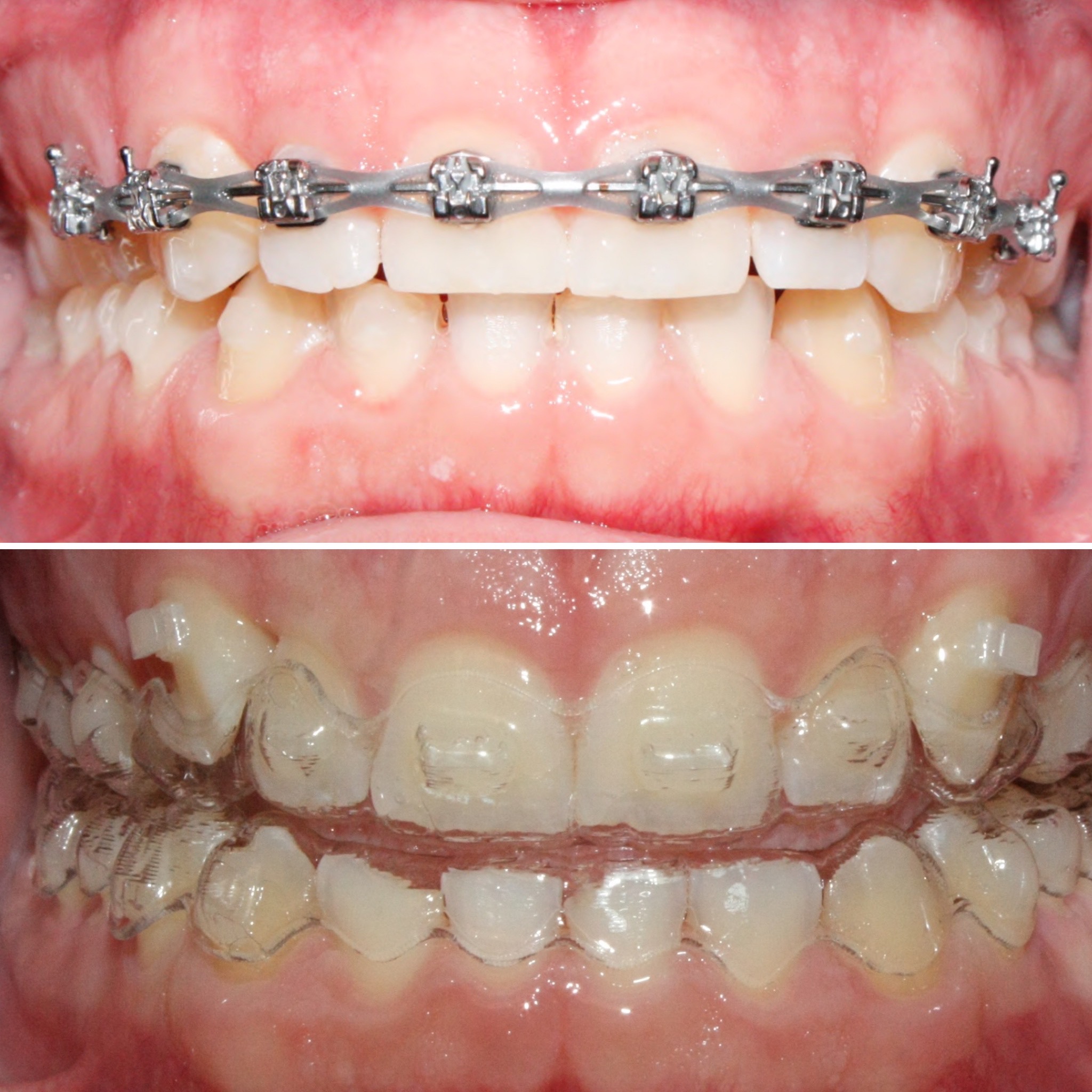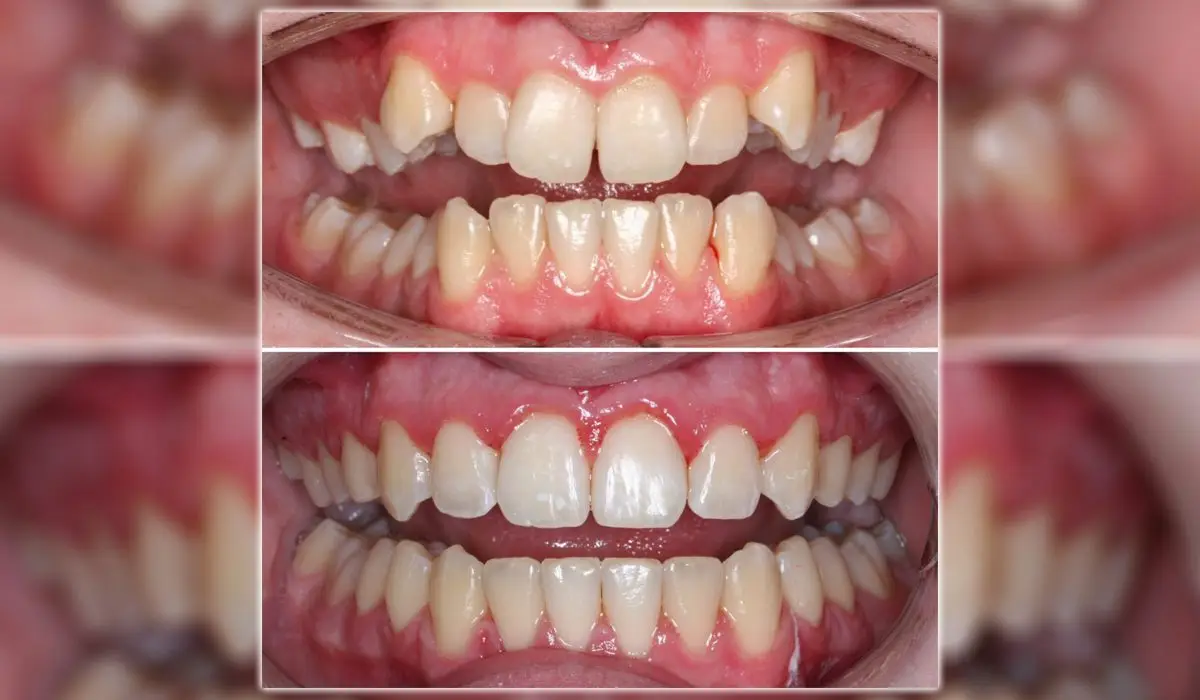Invisalign vs. Standard Braces: Which Alternative Is Right for You?
When taking into consideration orthodontic therapy, the selection between Invisalign and traditional dental braces presents several important variables that merit mindful analysis. Invisalign provides a discreet choice with removable aligners, while conventional braces give a much more noticeable yet efficient remedy for serious imbalance. Each alternative includes distinct benefits and downsides connected to aesthetics, convenience, treatment period, and price. Comprehending these subtleties is vital for making a notified choice that aligns with your personal choices and way of living. The concern remains: which choice will ideal fulfill your orthodontic needs and assumptions?
Introduction of Treatment Options

In contrast, standard braces include steel brackets and cables that are adhered to the teeth. This method applies continuous stress with time to achieve positioning. While reliable for complex orthodontic problems, typical braces need routine check outs for changes and can pose difficulties in keeping dental hygiene due to the difficulty of cleaning up about braces and wires.
Both choices have their qualities, and the choice typically rests on details oral problems, lifestyle preferences, and individual conformity. Inevitably, seeking advice from an orthodontic expert is critical for identifying one of the most appropriate therapy strategy customized to private requirements. Recognizing the subtleties of each choice can significantly influence the overall success of orthodontic treatment.
Visual Considerations
A significant element influencing the option in between Invisalign and conventional braces is the aesthetic allure each therapy provides. Invisalign aligners are crafted from clear plastic, making them practically unseen when put on. This discreet appearance is specifically interesting teenagers and grownups who might really feel uncomfortable about their orthodontic treatment. The capacity to preserve a natural smile throughout the placement process can dramatically boost the individual's confidence in social and specialist setups.
On the other hand, standard dental braces consist of steel brackets and cords, which can be much more recognizable. While improvements in orthodontic technology have caused the development of smaller braces and tinted elastics, conventional dental braces still maintain an even more conspicuous profile. For some individuals, the presence of dental braces may deter them from looking for essential treatment.
Eventually, the selection in between Invisalign and standard dental braces may rest on individual choices regarding aesthetics. Individuals that focus on discernment typically favor Invisalign, while those that are much less worried about visibility may choose typical braces. Recognizing the aesthetic effects of each option is important for making a notified choice that lines up with one's way of living and choices.
Convenience and Convenience

In terms of benefit, Invisalign aligners are removable, allowing people to enjoy their favored foods without limitation and keep ideal oral health. Brushing and flossing are streamlined, as the aligners can be obtained during these routines, whereas standard dental braces call for careful steering around braces and cables.
Furthermore, Invisalign's modern system enables less orthodontic sees. People normally get multiple collections of aligners simultaneously, which can streamline the therapy process and decrease time spent in the orthodontist's chair. In contrast, typical dental braces demand routine modifications, making them less practical for those with busy routines. Invisalign. On the whole, the comfort and convenience of Invisalign make it an attractive choice for many individuals seeking orthodontic therapy.
Therapy Duration and Performance
While both Invisalign and standard braces are efficient in dealing with dental imbalances, the duration of therapy can differ significantly in between the two alternatives. Normally, Invisalign treatment can take anywhere from 12 to 18 months, depending on the intricacy of the case. The clear aligners work by gradually moving teeth into their wanted positions, and normal follow-ups with an orthodontist help make sure progression remains on course.
In comparison, typical braces usually require a longer commitment, normally varying from 18 months to 3 years. This is due to their fixed nature and using brackets and wires, which can be more effective for serious misalignments and complicated instances (Invisalign). The treatment effectiveness of conventional braces is well-documented, as they enable exact changes and better control over tooth activity
Inevitably, the selection in between Invisalign and typical dental braces might depend upon both the awaited therapy duration and the particular dental issues handy. Consulting with an orthodontist is essential, as they can offer tailored recommendations based upon specific demands, making certain the chosen approach straightens with preferred timeframes and end results.
Expense Comparison and Insurance Coverage Options
Price plays a substantial duty in the decision-making process for individuals considering orthodontic treatment, whether selecting Invisalign or traditional braces. Usually, the expense of Invisalign varieties from $3,000 to $8,000, while traditional dental braces commonly set you back between $2,000 and $6,000. Variables influencing these costs consist of the complexity of the case, the period of treatment, and geographical place.
Insurance protection can substantially impact out-of-pocket expenditures. Numerous oral insurance coverage plans supply partial insurance coverage for orthodontic therapies, but the specifics can vary extensively. It is vital for clients to assess their insurance coverage plans to identify the level of coverage for either alternative. Generally, standard dental braces may be a lot more frequently covered by insurance coverage strategies contrasted to Invisalign, which some insurance companies categorize as a cosmetic treatment.
Additionally, a number of orthodontic methods use adaptable payment plans, making both treatment alternatives more available. Individuals should ask about possible funding alternatives and discounts Invisalign for upfront payments. Evaluating the total cost, including insurance benefits and layaway plan, is vital for making a notified decision that lines up with both aesthetic choices and spending plan factors to consider.

Verdict
In recap, the choice in more information between Invisalign and conventional dental braces depends upon numerous aspects, including visual preferences, convenience, therapy duration, and price. Invisalign provides a very discreet, detachable option that assists in oral health and dietary adaptability, while standard dental braces may be extra suitable for complicated oral problems and often come at a reduced price point. Inevitably, assessment with an orthodontist is crucial to evaluate specific circumstances and identify one of the most appropriate treatment alternative for achieving ideal oral placement.
When considering orthodontic therapy, the choice between Invisalign and standard dental braces presents several essential aspects that merit mindful evaluation.Comparing Invisalign and conventional braces exposes unique therapy alternatives for orthodontic improvement.While both Invisalign and traditional braces are effective in fixing dental imbalances, the duration of therapy can vary dramatically in between the 2 alternatives.Price plays a substantial duty in the decision-making procedure for people considering orthodontic therapy, whether deciding for Invisalign or typical dental braces.In recap, the Related Site option between Invisalign and conventional braces pivots on numerous aspects, including aesthetic preferences, convenience, therapy duration, and cost.
Comments on “Frequently Asked Questions Concerning Invisalign: Everything You Required to Know”